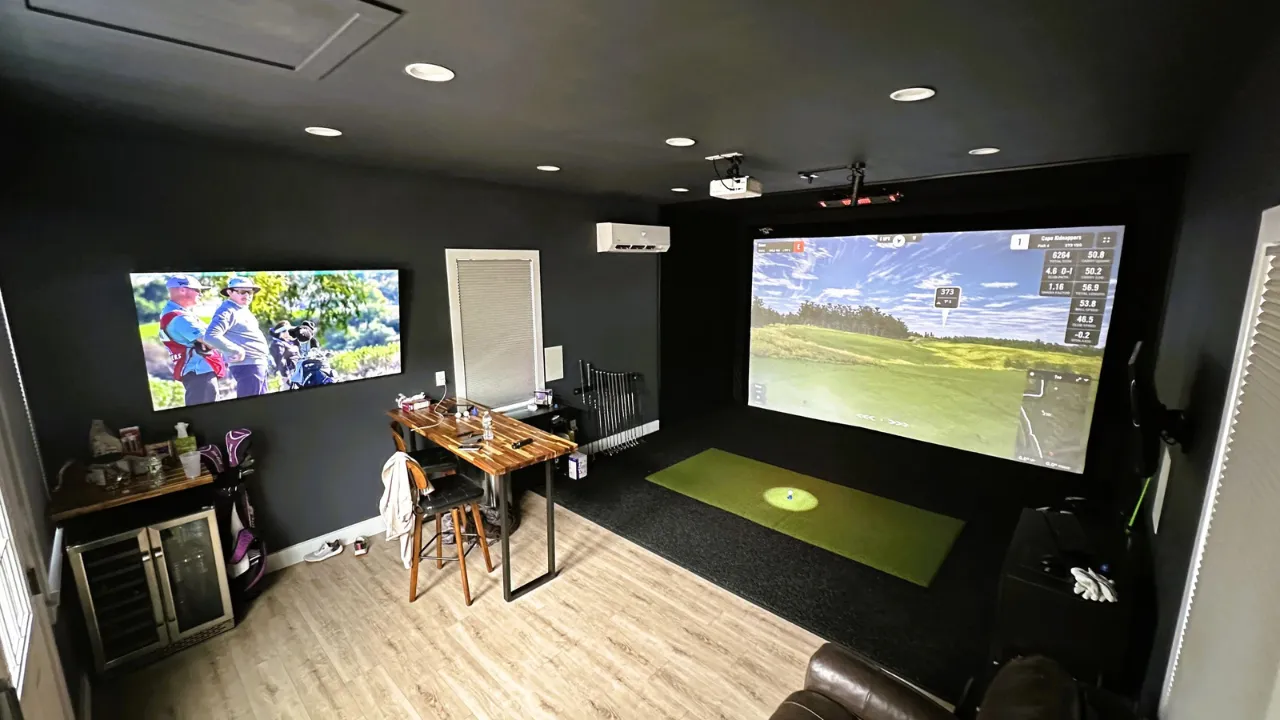The Smart Golfer’s Guide to Choosing a Golf Simulator What the Pros Won’t Tell You
Golf has always been a game of precision, patience, and practice. But in today’s tech-driven world, the way we train is evolving—fast. If you’ve ever considered taking your game indoors with a simulator, you’re not alone. What was once reserved for pro training facilities is now increasingly available to everyday golfers. However, choosing the right system isn’t as straightforward as reading specs and comparing prices. In fact, the details that matter most often don’t show up on the product brochure.
Here’s what seasoned players, instructors, and fitters understand—and what many first-time buyers overlook.
Why Are You Buying a Golf Simulator?
Define Your Purpose First
Before you get caught up in launch monitor specs or screen resolution, ask yourself one critical question: Why do I want a simulator? Are you looking to improve your swing mechanics? Practice year-round? Entertain friends and family? Or maybe simulate play on world-class courses from your garage?
Your primary goal will determine what features matter most. For example, a serious golfer focused on data analysis will need high-fidelity tracking, while a casual player might prioritize immersive graphics and game modes.
Don’t Let Shiny Features Distract You
Many companies highlight flashy visuals or entertainment software, but those are secondary if your main goal is game improvement. Clarity about your intent helps you filter through marketing noise and invest wisely.
The Truth About Tracking Technology
Not All Tracking Systems Are Created Equal
There are three main types of tracking technology: radar-based, camera-based, and infrared. Each has its strengths. Radar systems are typically better for outdoor or long-distance ball tracking, while camera-based systems offer more precise swing and impact data in tight spaces. Infrared sensors are often used in budget-friendly options but can be less accurate overall.
A professional-grade golf simulator typically combines two or more tracking technologies to minimize blind spots and increase measurement precision. This hybrid approach allows for detailed shot analysis, including clubface angle, path, and spin metrics.
The Calibration Factor
Even the best simulator can give flawed results if it’s not properly calibrated. This is a crucial step that pros never skip—but many home users overlook. You’ll want to check that your system is not only accurately set up but also recalibrated periodically to maintain consistency in data output.
Space: The Silent Dealbreaker
Minimum Requirements Are Often Misleading
One of the most common mistakes buyers make is underestimating how much space they need. Sure, the product description says a 10×10 room is enough, but will you have full swing freedom with your driver? Can you accommodate ceiling height, safety zones, and projector placement?
Most experts recommend at least 12 feet in length, 10 feet in width, and 9 feet in ceiling height for a functional setup. Anything less could limit your swing or compromise accuracy.
Consider Room Environment
Lighting conditions, wall color, and flooring type can all impact sensor accuracy and visual quality. Professionals often tailor their setup environments to optimize performance—and you should too.
Software Makes or Breaks the Experience
Look Beyond Course Graphics
While beautifully rendered golf courses are a fun perk, the software’s usability and feedback features are far more important for training. Can you export your swing data? Does it integrate with mobile apps or third-party analysis tools? Are there skill drills and progress tracking features?
A smart investment ensures that your software evolves with your needs—offering updates, training modes, and compatibility with the latest analysis tools.
Multiplayer and Family Use
If others in your household will be using the simulator, make sure the software supports multiple profiles or varied game modes. What works for a low-handicap player might be frustrating for beginners without suitable modes or difficulty levels.
Build Quality and Realism Matter More Than You Think
Hitting Mat and Screen Quality
The impact screen and hitting mat aren’t just accessories—they’re vital components of the experience. A cheap mat can lead to joint pain over time and provide inaccurate feedback on turf interaction. A low-quality screen may cause glare, wrinkles, or even wear out quickly under regular use.
Professionals often upgrade these components, even with premium packages. If the stock mat or screen doesn’t meet your expectations, factor in an aftermarket upgrade into your total budget.
Sound and Feel
Realistic sound feedback and tactile sensation matter more than you’d expect. Some simulators deliver near-silent hits, while others mimic the real-world “crack” of club meeting ball. If realism enhances your immersion or motivation, this subtle feature can become surprisingly valuable.
Practical Tips Most Buyers Miss
1. Don’t Overspend on Resolution
4K graphics look great, but if your swing data is off, visuals won’t help your game. Prioritize tracking precision over visual extras, especially if you’re serious about improvement.
2. Future-Proof Your Purchase
Golf technology evolves quickly. Choose a system that allows modular upgrades—such as improved launch monitors, updated software, or enhanced sensors—so you don’t outgrow your setup too quickly.
3. Test Before You Buy
If possible, try out different systems in person or at a golf retailer. What looks great on paper may feel clunky in reality. Ask questions, take swings, and compare feedback outputs to see which system matches your goals.
4. Think About Support and Warranty
A simulator is an investment—often in the thousands of dollars. Ensure the brand offers solid customer support, a clear warranty policy, and easy access to replacement parts or technical help.
Conclusion
Choosing the right golf simulator isn’t about finding the most expensive or feature-packed model—it’s about aligning your setup with your specific goals, environment, and training style. When done thoughtfully, a simulator can become one of the most powerful tools in your game improvement arsenal.
By focusing on performance, build quality, and long-term value rather than surface-level features, you’ll avoid the common pitfalls and make a choice you’ll appreciate every time you step up to swing.














Post Comment